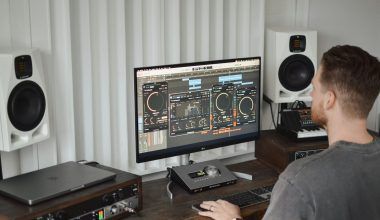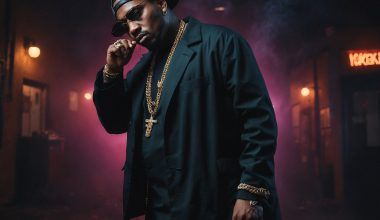When you hear the term “Parental Advisory Music,” it might bring to mind those black-and-white warning labels on album covers. But what does it really mean? Parental Advisory Music refers to songs or albums that contain explicit content. This could be anything from strong language to references to violence, drugs, or other mature themes. These labels serve as a heads-up for parents, helping them decide if the music is suitable for their children.
The concept of Parental Advisory Music came about in the 1980s, thanks to increasing concerns about the content young people were exposed to. This was a time when artists were pushing boundaries and exploring more controversial themes in their music. Parents, educators, and lawmakers began to worry about the influence these messages could have on impressionable minds. The result? The creation of the Parental Advisory Label (PAL).
Why Do We Have Parental Advisory Labels?
The main goal of Parental Advisory Labels is to inform consumers. If you’re a parent, it’s a way to know what your kids might encounter in a song or album. Think of it like a movie rating but for music. It doesn’t mean the music is bad or shouldn’t be listened to—it’s simply a warning.
For artists, these labels are often a badge of honor. In fact, some musicians wear the Parental Advisory Label as a sign that they’re bold and unfiltered. On the flip side, it can also limit their audience. Many retailers won’t stock explicit albums, and streaming platforms often require age verification to access them. So, while it’s a warning for parents, it’s also a balancing act for musicians.
The History of Parental Advisory Music
To really understand Parental Advisory Music, we need to go back in time. In the mid-1980s, a group called the Parents Music Resource Center (PMRC) was formed. This group, led by influential women like Tipper Gore, aimed to bring attention to explicit lyrics in popular music. They argued that certain songs promoted harmful behaviors and wanted a way to flag this content.
This led to hearings in the U.S. Senate, where musicians like Frank Zappa and Dee Snider of Twisted Sister testified. They argued that music is a form of free expression and that labeling it could lead to censorship. Despite their efforts, the PMRC succeeded in introducing the Parental Advisory Label in 1985. Initially, it was just a sticker that said “Explicit Lyrics,” but it later evolved into the iconic black-and-white label we know today.
How Does Parental Advisory Music Impact Artists?
For some artists, having the Parental Advisory Label can be a double-edged sword. On one hand, it can boost their credibility. Fans often see the label as a sign that the music is raw, authentic, and not watered down. It’s a way for artists to stand out in a crowded industry.
On the other hand, it can also create barriers. Some radio stations refuse to play songs with explicit content. Retailers like Walmart have been known to avoid stocking albums with the label. Even streaming platforms sometimes limit access to explicit music, requiring users to verify their age. This can make it harder for artists to reach a broader audience, especially younger fans.
Despite these challenges, many musicians embrace the label. They see it as a way to express themselves freely and connect with listeners who appreciate their honesty. After all, music is often about pushing boundaries and exploring difficult topics. For these artists, the Parental Advisory Label is just part of the package.
What Are the Effects of Parental Advisory Music on Listeners?
For listeners, especially younger ones, Parental Advisory Music can have a mixed impact. Some argue that explicit lyrics expose kids to mature themes before they’re ready. They worry that hearing about violence, drugs, or other adult topics could normalize these behaviors.
However, others believe that music is a way to start important conversations. If a teenager hears a song about mental health or struggles with addiction, it might encourage them to open up about their own experiences. In this sense, Parental Advisory Music can be a tool for education and understanding.
Parents play a crucial role in this process. By listening to the music their kids enjoy and discussing the themes, they can guide them in making sense of the messages. This way, Parental Advisory Music becomes less about shielding kids from reality and more about helping them navigate it.
How to Approach Parental Advisory Music as a Parent
If you’re a parent, the idea of your child listening to Parental Advisory Music might be concerning. But it doesn’t have to be a battle. Here are some tips to navigate this:
- Listen Together: Take the time to hear the songs your child loves. It’ll give you insight into their world and help you understand what draws them to this music.
- Discuss the Lyrics: Talk about the themes and messages in the songs. If there’s something troubling, ask your child what they think about it. This can be a great way to open up a dialogue.
- Set Boundaries: If certain songs or albums feel too extreme, it’s okay to set limits. Explain your reasons so your child understands where you’re coming from.
- Encourage Variety: Expose your kids to different genres and artists. This can help them develop a well-rounded appreciation for music.
Remember, the goal isn’t to ban Parental Advisory Music altogether. It’s about helping your child engage with it in a thoughtful and informed way.
The Role of Streaming Platforms in Parental Advisory Music
Today, most people access music through streaming platforms like Spotify, Apple Music, or YouTube. These platforms have made it easier than ever to find and listen to Parental Advisory Music. At the same time, they’ve introduced new ways to manage explicit content.
For example, many platforms allow users to filter out explicit songs. Parents can use these settings to ensure their kids only hear clean versions of tracks. Some services also include lyrics, making it easier to see if a song contains mature themes.
While these tools are helpful, they’re not foolproof. Kids are tech-savvy and can often find ways around restrictions. That’s why open communication is so important. By talking to your child about their music choices, you can guide them more effectively than any filter ever could.
Conclusion: Embracing the Conversation
Parental Advisory Music isn’t going away. In fact, as artists continue to push boundaries, it’s likely we’ll see even more songs and albums with the label. Rather than fearing it, we can use it as an opportunity to connect with our kids, understand their world, and have meaningful conversations.
Music is a powerful tool for expression and connection. By approaching Parental Advisory Music with an open mind and a willingness to discuss its themes, we can help young listeners navigate its complexities and appreciate its artistry. After all, music isn’t just about what we hear—it’s about how it makes us think, feel, and grow.
Related Articles:
For further reading, explore these related articles:
- Circles Post Malone Lyrics – A Song About Love, Loss, and Life
- Billie Eilish’s Big Moment at the Oscars 2022: A Night to Remember
For additional resources on music marketing and distribution, visit DMT Records Pvt. Ltd..






